From kitchen worktops and bathroom splashbacks to flooring and reception desks, terrazzo is finding popularity in all sorts of guises. But what makes this ancient material fit for the here and now and how are architects and designers innovating in using it?
By Helen Parton
Although terrazzo can be traced all the way back to ancient Egypt, it seems to be having a moment in 2021, with architects and designers in the UK and beyond cleverly adapting this material for a variety of uses in both residential and commercial projects.
In its earliest incarnations thousands of years BC, it appeared as mosaics but the terrazzo we know today derives from a technique first used in Italy in the 18th century which saw chips of marble poured with a cement binder which was then ground and polished. The 1920s saw further developments in its installation, with the advent of divider strips which allowed the material to expand and contract in sections and different colours to be added. Around the same time, the process was further mechanised by using electric grinding machines, instead of hand polishing. Later on in the twentieth century, a thin set method saw polyester and then epoxy resin used which offered wider varieties of colours and quicker installation.
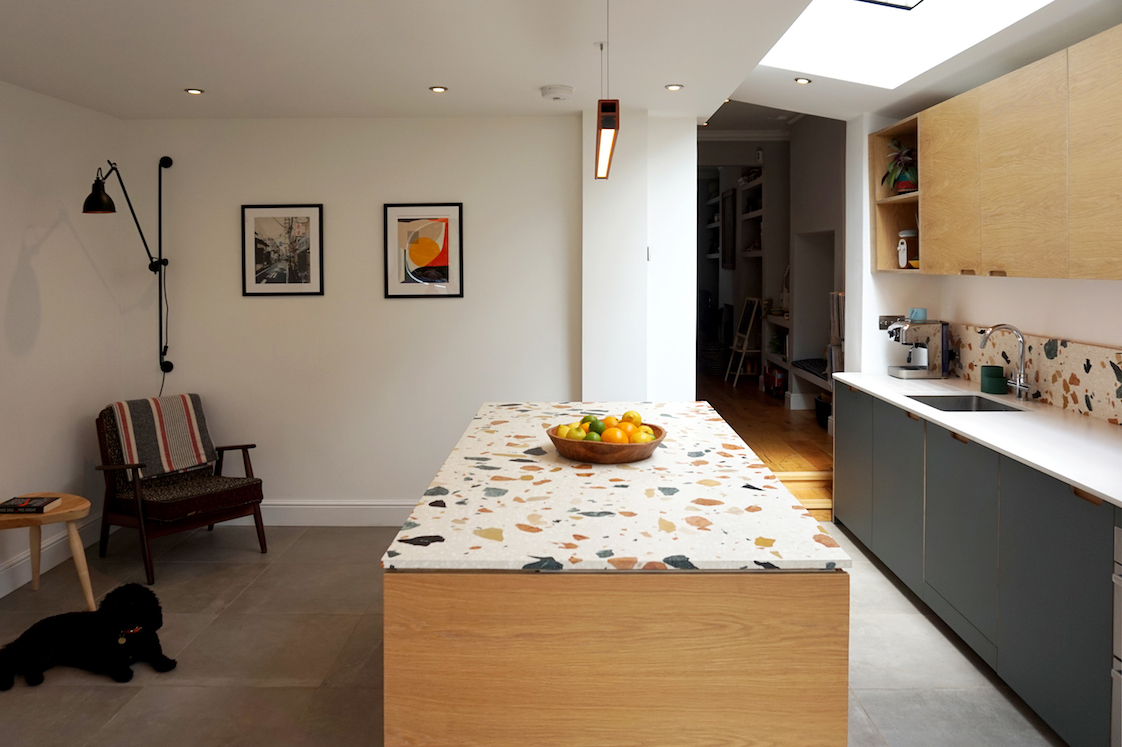
Designer Max Lamb’s take on terrazzo produced by Dzek and used in a project in Barnet, north London by kitchen designers HØLTE.
© Sara Hibbert
Designers today are able to play with proportions with large chunks of marble bound in polyester resin on, say, a worktop or splash back gives a new interpretation of a material than the smaller chips of quartz, granite or glass on a floor. As well as a striking surface, terrazzo used in this way has the longevity and texture, without the cost of solid marble.
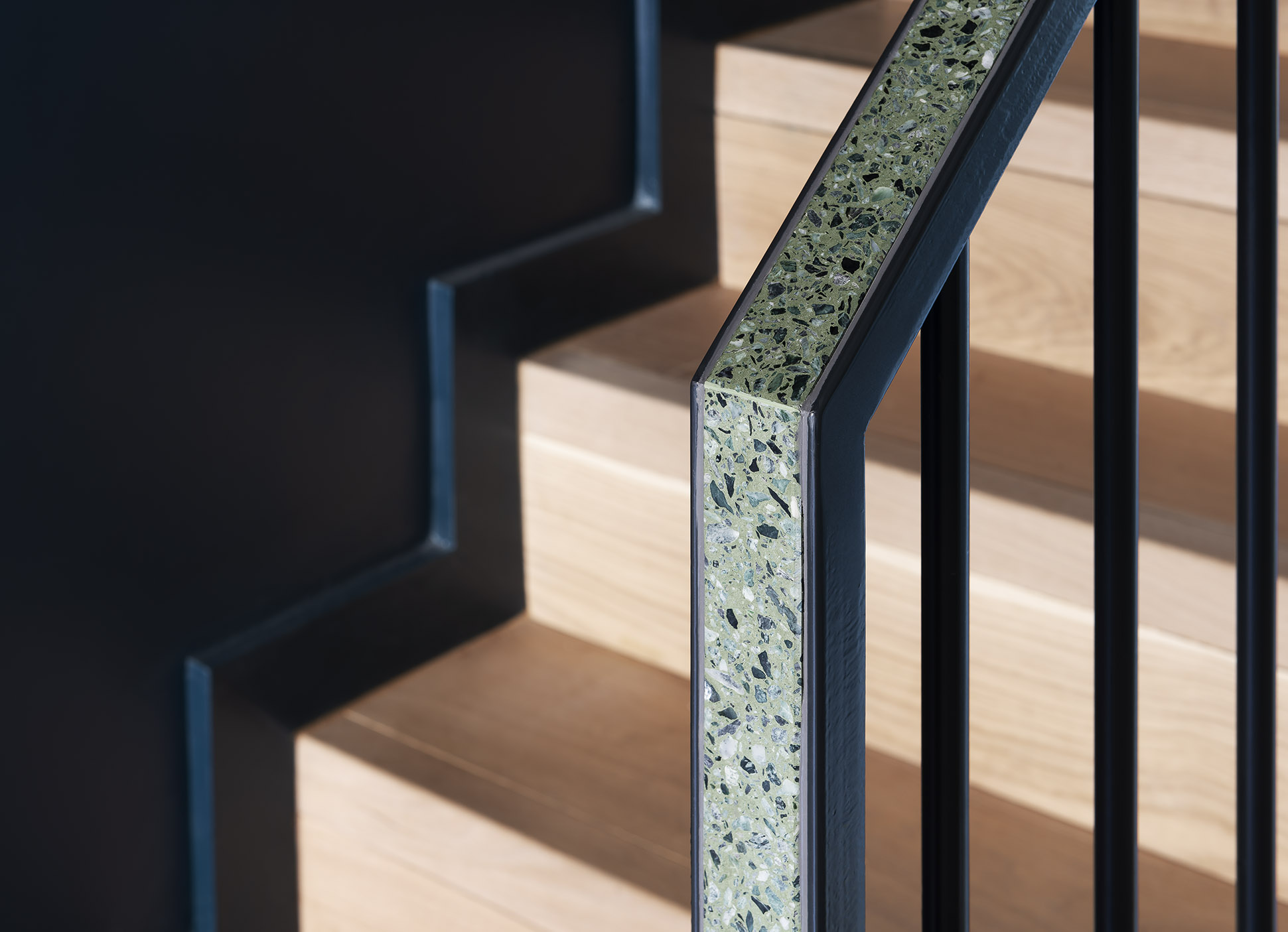
Architects Bureau de Change used terrazzo in an extension and refurbishment to a Victorian terraced house in south London.
© Gilbert McCarragher
Terrazzo can also be used to visually mark the transition between spaces of an interior when interspersed with different materials such as timber or tiling to create a natural circulation route. And because it can be used on different proportions from smaller details such as handrails as well as in larger sections of flooring, it creates a feeling of consistency without being too matchy-matchy.
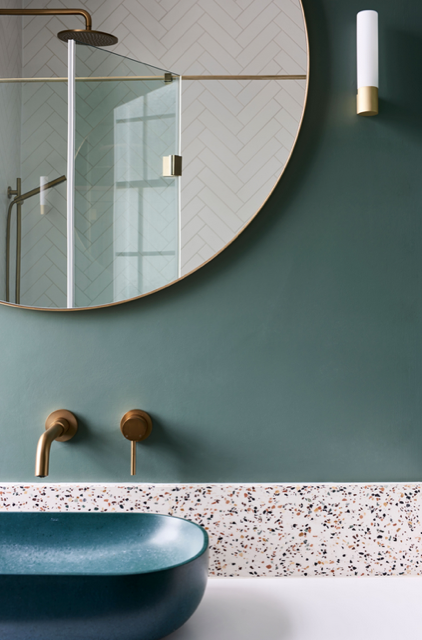
Simpson Studio used a colour palette of white and gold with terrazzo adding natural colour tones of orange and vivid green for this shower room in Devon.
© Simpson Studio
Designers can introduce different colours to an interior using terrazzo, without the effect being too overpowering. This can work particularly well in smaller rooms of a house such as bathrooms where the focus may be one or two shades but the terrazzo can be used to bring a full spectrum of shades.
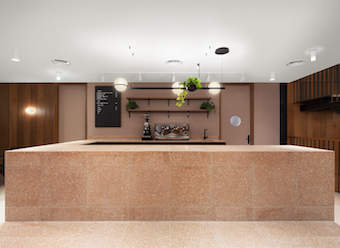
Architects dMFK design for the The Office Group’s coworking space at One Canada Square with rich-figured terrazzo.
Terrazzo’s versatility means it isn’t just suitable for homes but also commercial interiors. In period buildings, it can be used to unite the interior’s original look and feel with the present day without being overly reverential, either as a statement piece such as a reception desk or to create a textural feel to flooring. It’s also a highly durable material, ideal for high traffic environments such as schools, hospitals and other commercial spaces. It is resilient to water damage or staining and requires minimal maintenance. And because it doesn’t have grout lines, it’s easy to keep clean in, for example, food service areas or WC's.
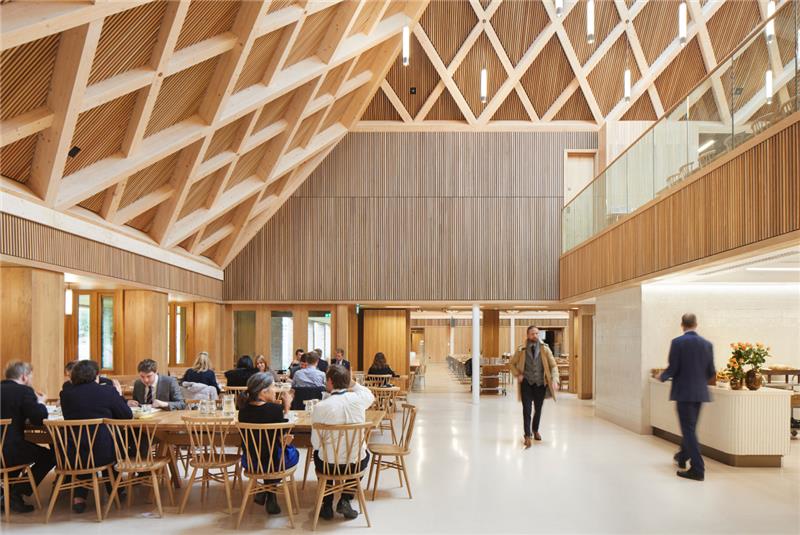
Architects Maccreanor Lavington's new school dining hall for Ibstock Place School in south-west London used resin based terrazzo in the front-of-house food service areas.
© Jack Hobhouse
From its beginnings on the walls of an ancient civilisation to being an allpurpose flooring material, the current trend for terrazzo has widened its usage even further to everything from bathtubs and sinks to staircases and countertops. Today it is a go-to material for architects and designers looking for the wow factor in a wealth of different colours and patterns.